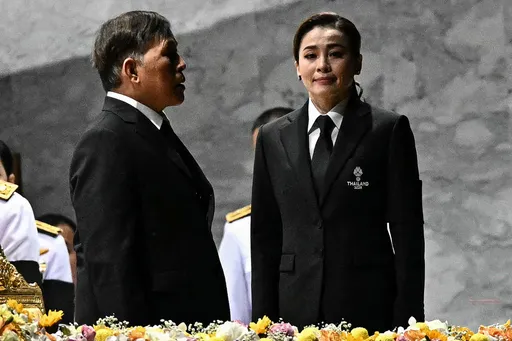Historically, extremist groups across the ideological spectrum have used conspiracy theories not only to produce violence and lure recruits, but to validate their Manichean worldviews as well.
During crisis events such as pandemics and natural disasters, conspiracy theories proliferate quickly and gain widespread traction. In August 2020, the European Union's Counter Terrorism Coordinator, Gilles de Kerchove, warned about new forms of terrorism based on conspiracy theories.
Although a culture of conspiracy theories existed within the extremist groups of all hues and stripes, it became more prominent during the Covid-19 pandemic resulting in an explosion of unverified myths and rumors. Conspiracy theories play a significant social and functional role as enablers and multipliers of violent extremism.
Extremist groups use conspiracy theories as a rhetorical device to legitimise their violence and generally exploit those conspiracy theories which have a strong emotional appeal. Conspiracy theories also act as an adhesive in keeping extremist groups together and pushing them in more extreme directions, resulting in violence.
Against this backdrop, examining the potential role of conspiracy theories as enablers and incubators of violent extremism is essential. Arguably, when paired with conspiracy theories and misinformation, extremist narratives carry mass appeal, especially if they are linked to prevailing socio-political and economic concerns.
In early December, the vigilante killing of a Sri Lankan national in Pakistan's Sialkot over alleged blasphemy charges brings into sharp focus the role of conspiracy theories in fueling extremist violence. The rumors surrounding the blasphemy allegations, which pushed the enraged mob towards violent extremism, were actually motivated by personal vendetta.
In Pakistan, radical religious groups like Tehreek-e-Labaik Pakistan have created a hostile environment where even legislative efforts to remove the procedural lacunae, which have been abused for years, have been conspiratorially deemed as efforts to undermine Islam.
On the other hand, militant groups like Al Qaeda and Daesh have employed victimhood-based conspiratorial narratives that portrays Islam as being under siege, which requires fighting back by to defend the religion.
In doing so, these groups advance their ideological narratives to attract recruits and funding and legitimise their extremist violence. By linking individual Muslim grievances with broader narratives of Muslims' decline, Al Qaeda and Daesh provide aggrieved individuals self-worth by allowing them to participate in events of historical significance, i.e., performing a sacred duty to glorify Islam.
Similarly, the 2021 Capitol attack epitomises the role of conspiracy theories as triggers of extremist violence. On January 6, a number of former US President Donald Trump's supporters, including far-right groups like QAnon and Proud Boys, stormed the US Capitol in Washington in a bid to disrupt the peaceful transition of power, following the incumbent President Joe Biden's election victory. They conspiratorially believed that Trump's mandate was deliberately stolen to eject him from power.
QAnon is an online conspiracy group whose sudden rise underscores how conspiracy-driven violence translates into domestic terrorism in the US. Their influence spread rapidy after the outbreak of Covid-19 and a survey in May 2021 found that almost one in five Americans believe in QAnon conspiracy theories.
In 2019, the Federal Bureau of Investigation classified QAnon as a domestic terrorist threat.
Similarly, in Europe, conspiracy theories linked to the emergence of new technologies (or technophobia) also result in violent incidents. The adherents of technophobia are known as neo-Luddites. In the 19th century UK, Luddites were a group of English textile workers who destroyed textile machinery, fearing machines would replace their role in the industry.
The launch of 5G technology in Europe coincided with the coronavirus outbreak, resulting in attacks on 5G towers in different parts of the UK, the Netherlands, Belgium, Sweden, Italy, Cyprus, Germany and France. These attacks involving arson and vandalism were based on the myth that the droplets that cause the coronavirus can spread from 5G poles' electromagnetic waves.
Neo-Luddites also believed that the coronavirus lockdowns announced by different European governments were a cover to weaken public resistance against the installation of 5G infrastructure.
Likewise, in India, Hindutva extremists have proliferated a number of conspiracy theories against the Muslim community leading to discriminatory legislation and hostile social attitudes.
For instance, the first major vector of Covid-19 in Delhi was the Tableeghi Jamaat Markaz, known as Nizamuddin Mosque. Several Tableeghi Jamaat members were stranded at Nizamuddin Mosque after the Bharatiya Janata Party (BJP) government suddenly announced a massive lockdown disrupting public transport. The Covid-19 cases emerging from Nizamuddin Mosque were termed "corona jihad."
The Tableeghi Jamaat's annual gathering was singled out for spreading the coronavirus in India even though Hindu religious festivals were taking place simultaneously.
Similarly, the BJP's para-militant wing, the Rashtriya Swayamsevak Sangh, used conspiracy theories like love, land, population and jihad to target the Muslim community leading to recurring communal tensions and riots.
The 'love jihad' conspiracy opines that Muslim men in India are luring Hindu women into marriages to convert them to Islam as part of the broader war by Muslims against India. Some states in India have passed anti-love jihad laws to discourage inter-faith marriages, especially of Hindu women to Muslim men.
Meanwhile, 'land jihad' refers to the alleged plot by the Muslim community forcing Hindus to sell their native lands (in the countryside) by making it uninhabitable through cattle theft and throwing chopped heads of the cattle in the courtyard. On the other hand, the 'population jihad' pertains to a faster growth rate of the Muslim population aimed at outnumbering the Hindus in India.
The use of conspiracy theories for extremist violence by terrorist groups across the ideological spectrum will have long-term implications for the global efforts to curb extremism and terrorism.
The unhindered circulation of conspiracy theories would produce a climate conducive for undirected radicalism. The 5G attacks, outlined above, are only one manifestation of new forms of political violence related to emerging technologies. Similar concerns also exist regarding automation, Artificial Intelligence and robotics. If not equipped with the requisite skill sets and knowledge, people fear losing their jobs.
Going forward, states involved in countering extremist narratives will have to focus on the potential role of conspiracy theories as enablers and producers of violent extremism as well.
























